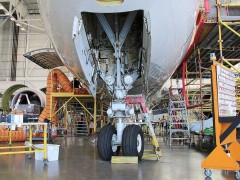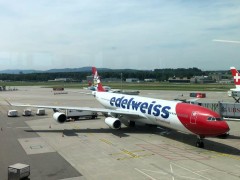The aerospace “super cycle” was a popular discussion topic at the Paris Air Show last month, as all major end-user segments—commercial, defense, business aviation and space—are poised for concurrent production growth. But below the optimistic veneer lies a weak and fragile supply chain that continues to struggle after years of cost pressure and cash extraction by OEMs.
A fundamental reset of OEM-supplier relationships and commercial terms will be required to reach higher production rates. A “Supplier New Deal” is needed, built on fairness, collaboration and mutual investment. What are the elements of a new social contract between OEMs and suppliers?
First, reduce supplier payment terms. As I argued in my Up Front column titled “Suppliers Aren’t Banks” about two years ago (AW&ST April 10-23, 2023, p. 10), standard U.S. commercial aerospace payment terms have increased to 120 days from 30 days over the past 15 years, leading to a disastrous increase in the cash-to-cash cycle and diminished working capital. OEMs have treated suppliers like banks to boost free cash flow and equity prices. Payment terms are better in Europe, but many subtier suppliers are struggling to repay government loans issued during the COVID-19 crisis while they grapple with funding production rate increases.
Second, guarantee schedule stability. Suppliers have been whipsawed by the late-2010s ramp-up, the Boeing 737 MAX production shutdown, the COVID-19 crisis and now erratic OEM production rates and 737/777 certification delays. As a result, most suppliers distrust OEM forecasts and are loath to order long-lead items or invest capital. Many rely on their own assumptions about realistic build rates, which undermines a well-functioning ecosystem. Forward-thinking OEMs can “walk the talk” by implementing take-or-pay contracts to guarantee supplier revenue.
Third, widen supplier delivery windows. OEMs have considerably tightened on-time delivery windows while increasing penalties and cost assertions. A decade ago, for example, Boeing’s window was 15 days (+10 early, -5 late), which it reduced to five days (+3 early, -2 late) in 2017 and then three days (+3 early, 0 late) in 2020. This places an unfair burden on suppliers that are contending with their own bottlenecks and labor shortages. In some cases, OEMs lack systems to manage reorder lead times, avoid short-flow orders and accurately track delivery performance.
Fourth, adjust pricing models and share cost risks. Suppliers face unrelenting price increases, especially in engineered components, special processes, forgings, castings and extrusions. Another rising cost is U.S. tariffs—aluminum and steel tariffs are already in place, and country-specific measures seem to shift daily. Someone will have to “eat” the tariffs, and smaller companies with fewer political connections often bear the burden. OEMs should revisit unfavorable long-term contracts and consider revising termination clauses.
“I used to see new competitors enter the market every month, but when margins got forced so low, it’s no wonder nobody invested in this industry,” one aerostructures executive says. “Why spend tons of money on expensive equipment and process controls when the market yields 6-7% operating profit? Pricing must increase if the ecosystem is going to get healthy.”
Finally, OEMs should embrace humility. They should admit past mistakes and rebuild relations and trust with their supply base. It is time to turn the page on such damaging policies as Boeing’s Partnering for Success and Airbus’ SCOPe+. This shift would require cultural and organizational changes that promote critical thinking and encourage solution-oriented approaches beyond existing policy constraints. Adapting to this new paradigm would mean upskilling supply chain and procurement teams across all levels and restoring technical support capabilities that have been depleted in recent years. In the words of former Airbus Americas CEO Barry Eccleston: “We need to get real about the supply chain.”
There are signs of hope that major OEMs are changing. Suppliers indicate that Boeing is becoming more collaborative under CEO Kelly Ortberg, who was once on the receiving end of Boeing’s tactics as the leader of Collins Aerospace. And GE Aerospace is conducting intensive supplier listening sessions as it reconsiders its supplier strategy in the Larry Culp era.
Without a Supplier New Deal, the promise of an aerospace super cycle is at risk. The current game of supply chain whack-a-mole will persist, and supplier attrition—or defection to other industries—will continue.
Will OEMs rise to the challenge and lead the reform?





